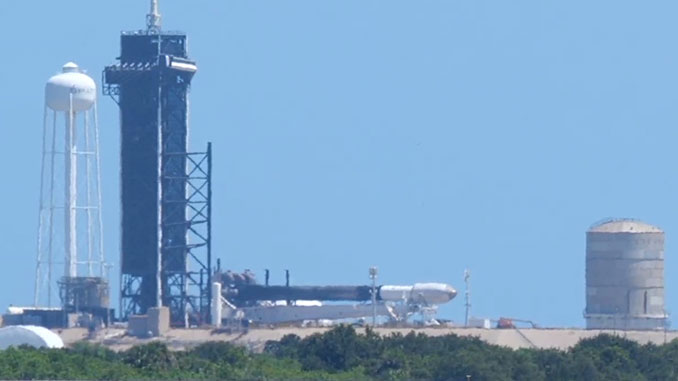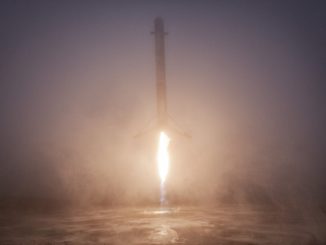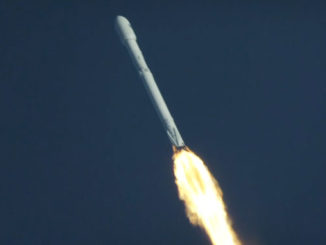Update: 10:57 p.m. EDT:
SpaceX’s Falcon 9 rocket lifted off from Launch Complex 39A at 10:47 p.m. EDT (0247 UTC), marking an historic 62nd orbital launch this calendar year. The mission broke its own orbital launch record that it set back in 2022 when it launched 61 orbital missions for the full year.
In a post on his social media platform, X, SpaceX founder Elon Musk said the company is “aiming for 10 Falcon flights in a month by [the] end of this year, then 12 per month next year.”
The first stage booster supporting this mission, B1073, also completed its 10th launch and landing to date. This was the 24th Starlink mission to launch from LC-39A and SpaceX’s 69th launch from that pad to date.
Update 6:56 p.m. EDT:
SpaceX is now targeting a T-0 liftoff time of 10:47 p.m. EDT (0247 UTC). This is 90 minutes before the planned splashdown time of the Crew-6 astronauts and cosmonaut aboard the Crew Dragon Endeavor.
SpaceX has one additional backup time on Sept. 3 for this launch at 11:05 p.m. EDT (0305 UTC). There are also five backup opportunities on Monday, Sept. 4, from 6:59 p.m. EDT (22:59 UTC) until 10:39 p.m. EDT (0239 UTC on Sept. 5).

A Falcon 9 rocket is being readied Sunday for a record-breaking 62nd orbital launch of the year for SpaceX. The previous record was set in 2022 with 61 launches by the company. Liftoff from pad 39A at the Kennedy Space Center, with 21 Starlink satellites aboard, is currently targeted for 9:56 p.m. EDT (0156 UTC).
SpaceX has averaged an orbital rocket launch every four days so far this year. It chalked up nine Falcon 9 launches in August. A total of 62 launches in a calendar year would be the highest number achieved by a single commercial launch company.
“Aiming for 10 Falcon flights in a month by end of this year, then 12 per month next year,” SpaceX founder and CEO Elon Musk said in a post on X, the social media site formerly known as Twitter.
This 62nd launch of the year for SpaceX will carry 21 of the so-called V2 mini satellites for the company’s Starlink internet service.
Seconds after clearing the launch pad, the Falcon 9 will pitch and roll on to a south-east trajectory, targeting an orbit inclined at 43 degrees to the equator. After separating from the second stage about two and a half minutes into flight, the first stage booster will head for a landing on the drone ship ‘Just Read the Instructions’, which will be stationed in the Atlantic east of the Bahamas about 390 miles (627 km) from the Cape. The first stage booster, tailnumber B1077, is making its 10th mission.
Two burns of the second stage are required to place the satellites into the required circular orbit. Separation of the 21 Starlinks will occur about one hour, five minutes after launch.
It will be the 16th launch of this next-generation Starlink satellite model which is larger and has four times the bandwidth of the previous versions. The full-sized V2 Starlink satellites are due to be launched by SpaceX’s fully-reusable Starship vehicle, but the delayed debut of Starship led the company to create a condensed version of the satellites so they could be launched on Falcon 9.
According to statistics compiled by Jonathan McDowell, an astronomer at the Harvard-Smithsonian Center for Astrophysics who maintains a space flight database, to date SpaceX has launched a total of 5,027 Starlink satellites into orbit.
In early May, SpaceX announced it had more than 1.5 million subscribers to Starlink. The company’s internet service is available in more than 60 countries.
Watch live views from the Cape in our Launch Pad Live stream:



